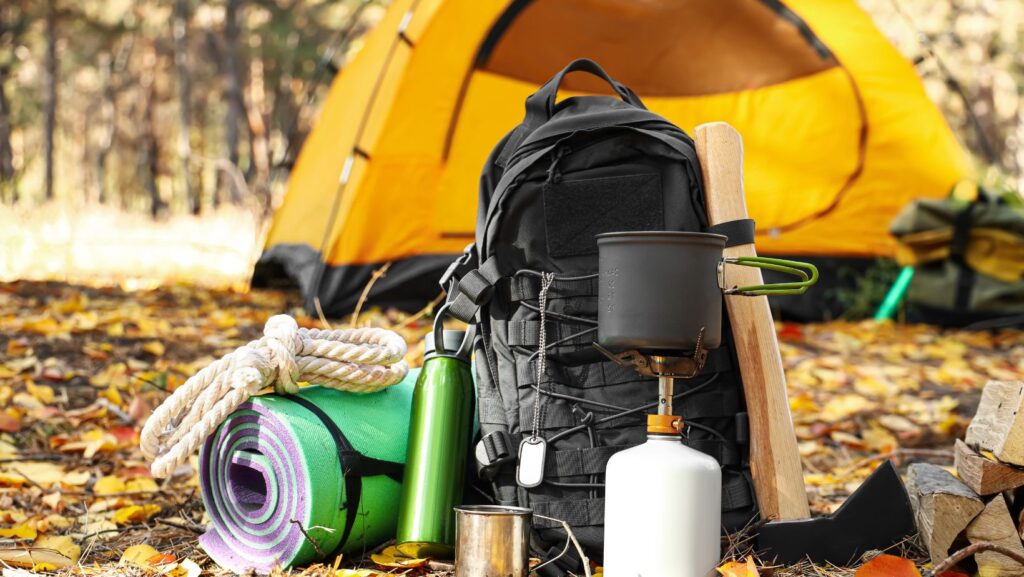
Hiking and camping require proper preparation for a safe and enjoyable experience. When buying gear, consider durability, weight, and functionality. Opt for high-quality, lightweight materials that withstand the elements without adding extra weight. Read reviews, compare products, and select gear that suits your needs.
From the right tent to hiking boots, we’ll guide you through choosing the most desirable equipment for your adventure. Here are 6 essential items to pack and tips for selecting the best gear based on your specific requirements.
The Camping Tent
Selecting the right tent enhances your comfort and safety during outdoor adventures. Consider capacity for occupants and gear, opting to size up for more space. Choose between 3-season tents for spring to fall and 4-season tents for winter conditions. For backpacking, prioritize weight and packed size; for family camping, focus on comfort and space. Evaluate livability factors like interior space, peak height, and access points. Freestanding tents are easier to set up, while non-freestanding ones may require more effort. Assess materials and durability, and set a budget to find the best option within your price range. Your tent is your sanctuary, so choose sensibly.
Hiking Backpack
Ensure your hiking backpack provides comfort, distributes weight evenly, and offers ample storage as it is crucial for enjoying outdoor adventures. When shopping at a sporting goods store, consider capacity based on gear and trip duration, with 15-30L for day hikes, 30-50L for overnight, and 50L+ for extended trips. For fit and comfort, look for adjustable torso lengths, hip belts, shoulder straps, padded back panels, and ventilation. Hydration compatibility is important, so opt for built-in hydration sleeves. Multiple compartments help organize gear, and a rain cover protects it from rain. Choose lightweight materials, and compare backpacks within your budget for features and materials.
Sun Protection
Always pack and wear sunglasses, sun-protection clothing, and sunscreen. This prevents sunburn, snow blindness, premature skin aging, skin cancer, and cataracts.
Sunglasses: Essential for eye protection from UV radiation. Use extra-dark glacier glasses for prolonged snow or ice exposure. Carry a spare pair in case you lose it or forget it.

Sunscreen: Shields against sunburn, premature aging, and skin cancer. Pick SPF 30 or higher, blocking both UVA and UVB rays. Apply generously and reapply every two hours.
Sun-protection clothing: Blocks UV rays without needing sunscreen. Opt for UPF-rated clothing and a full-brim hat for maximum protection.
Navigation
Navigation tools for backcountry travel include a map, compass, altimeter watch, GPS device, and personal locator beacon (PLB). A topographic map is essential for trips beyond short, well-marked trails. A compass, ideally with a sighting mirror, is crucial as a non-battery backup. GPS devices, including smartphones with apps, provide accurate location data but rely on batteries. Altimeter watches estimate elevation using air pressure or GPS data, aiding navigation. PLBs or satellite messengers alert emergency personnel via GPS, offering reliable assistance in remote areas where cell signals are unavailable.
Break in Your New Hiking Boots
Breaking in new hiking boots is pivotal for preventing blisters, ensuring a comfortable fit, and enhancing your hiking experience. Properly broken-in boots mold to your feet and offer the needed support. Begin by wearing your boots indoors, then progress to short neighborhood walks. Wear your hiking socks during this procedure and experiment with lacing techniques for a secure fit.

Address any hotspots or blisters immediately with moleskin or blister pads. Be patient, as breaking in boots takes time. Following these steps ensures your boots are ready for your hiking adventure.
First Aid
It’s necessary to have a first-aid kit and know how to use its items. Pre-made kits simplify the process, but many customize them to fit personal needs. Your kit should have blister treatments, bandages in different sizes, gauze pads, adhesive tape, disinfecting ointment, pain relievers, pen, and paper. Nitrile gloves are a must-have.
The duration of your trip and the number of participants will determine your kit’s contents. Carrying a small guide on handling medical emergencies is also wise.













